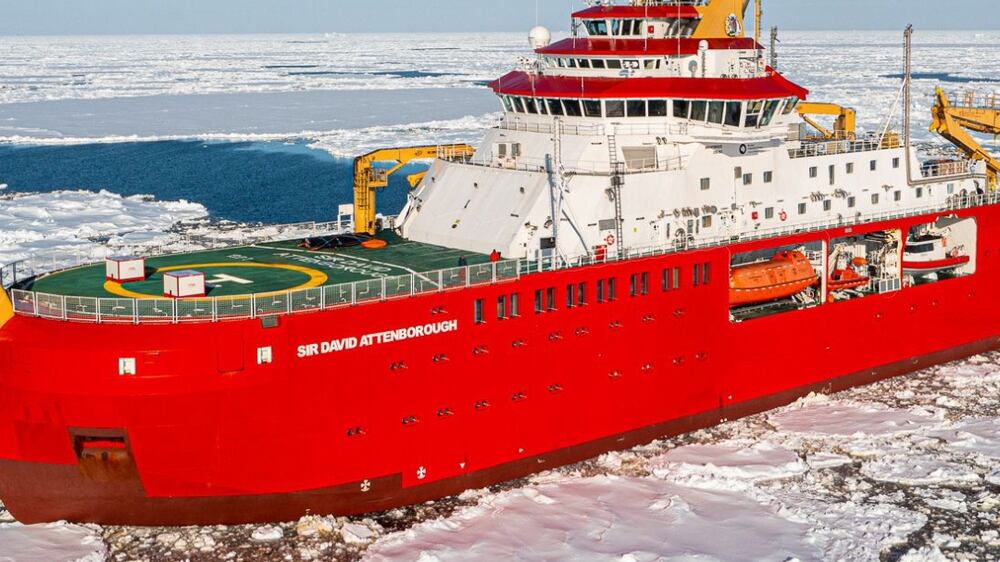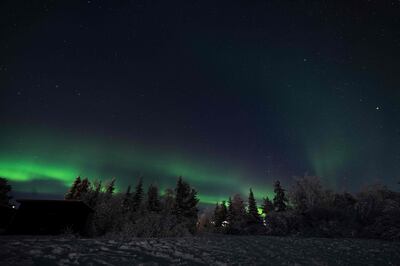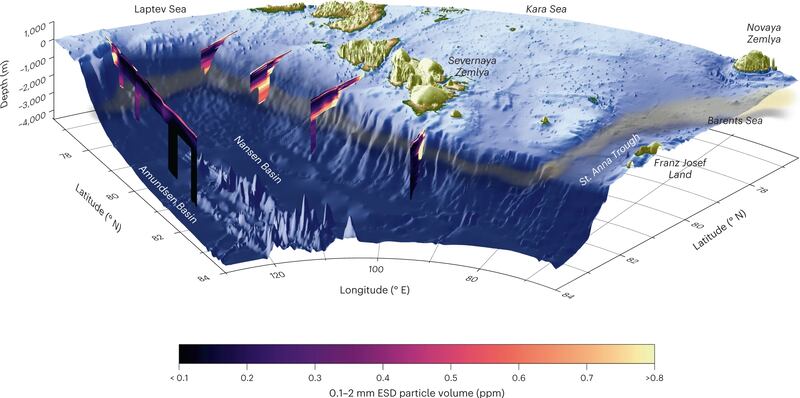Researchers have discovered a carbon 'conveyor belt' in the Arctic that could bind millions of tonnes of carbon dioxide in deep seas for millennia.
The discovery was made after a research vessel detected large amounts of particulate carbon — carbon stored in plant remains — was found in the Nansen Basin of the central Arctic.
Analysis revealed the body of water contained large amounts of particulate carbon at depths of up to two kilometres. The body comprises bottom water from the Barents Sea.
Bottom water is formed when sea ice develops in winter, and cold and heavy water sinks from the shallow coastal shelf, down the continental slope and into the deeps of the Arctic Basin.
“Based on our measurements, we calculated that through this water-mass transport, more than 2,000 metric tonnes of carbon flow into the Arctic deep sea every day, the equivalent of 8,500 metric tonnes of atmospheric CO2,” said Andreas Rogge, who led the research, which was published in Nature Geoscience.
That is equivalent to a 13.6 million tonne carbon flow each year — equal to Iceland’s total annual CO2 emissions.
The plume of carbon-rich water runs about 1,000 kilometres from the Barents Sea and Kara Sea shelf into the Arctic Basin.
Take a look inside the UK's floating polar research laboratory

That means the Barents Sea would appear to effectively remove roughly 30 per cent more carbon from the atmosphere than thought.
Model-based simulations suggest the outflow takes place in seasonal pulses, since in the Arctic’s coastal seas, the absorption of CO2 by phytoplankton only takes place in the summer.
Single-celled algae absorb carbon from the atmosphere on the ocean’s surface and sink when they die.
Once carbon bound in this manner reaches the deep water, it stays there until overturning currents churn the water back to the surface, which takes several thousand years in the Arctic.
But if the carbon is deposited in deep-sea sediments, it can be trapped there for millions of years, as only volcanic activity can release it.
This process, also known as the biological carbon pump, can remove carbon from the atmosphere for long periods, providing a sink in the Earth’s carbon cycle.

The process provides a food source for deep sea creatures such as sea stars, sponges and worms. What percentage of the carbon is actually absorbed by the ecosystem is something research will reveal.
The polar shelf seas harbour other largely unexplored regions where bottom water is formed and flows into the deep sea. As such, it can be assumed that the global influence of this mechanism as a carbon sink is increased.
“However, due to the ongoing global warming, less ice and therefore less bottom water is formed,” said Mr Rogge, an oceanographer at the Alfred Wegener Institute, Helmholtz Centre for Polar and Marine Research.
“At the same time, more light and nutrients are available for the phytoplankton, allowing more CO2 to be bound.
“Accordingly, it’s currently impossible to predict how this carbon sink will develop, and the identification of potential tipping points urgently calls for additional research.”







